Motorola Launches the Moto 360: Hands On and First Impressions
by Joshua Ho on September 5, 2014 2:15 AM EST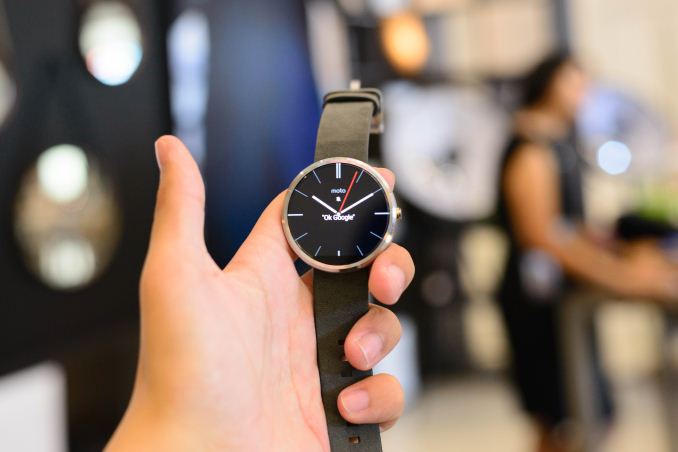
The Moto 360 at this point is one of the most hyped products I've seen this year. However, in my time with the product it seems to be a mostly standard Android Wear watch, but with a few major differences.
At the most basic level, this watch has a TI OMAP 3 for the main application processor. From a performance perspective the OMAP 3 is a solid and simple choice, packing a Cortex-A8 CPU alongside a PowerVR SGX 530 GPU, reflecting the fact that wearables don't require anything near cutting edge performance. However this choice in SoC is oddly out of date on the manufacturing side as OMAP 3 was produced on a now dated 45nm process. Though the Moto 360 doesn't need the performance benefits from from newer 28nm or 20nm processes, these newer processes can deliver similar performance with lower power consumption, which would seem to be a boon for a space and power constrained device such as a watch.
Otherwise, the specs are mostly within expectation. The LCD display is a 1.56" size with 320x290 resolution, and is 46mm in diameter and 11.5mm thick. The leather strap model we've been sampled weighs 49 grams, and the battery has 320 mAh in capacity. Although the nominal voltage isn't given it's likely that it's 3.8V. There's 4 GB of internal storage and 512MB of RAM, a pedometer, heart rate monitor, two microphones, and the watch is rated for IP67 immersion protection, which means it is dust tight and submergable up to 1m of water for half an hour.
Motorola wanted to emphasize that this was a modern timepiece rather than a smartwatch, and they’ve implemented a great deal of new technologies in order to support the intended industrial/material design and user experience. The most obvious of these is the round display, which has no bezel except for the bottom of the watch. Unfortunately, it appears that this area at the bottom is necessary in order to fit the display driver and provide an area where ribbon cables can come out and meet the logic board.
In addition, we see custom antennas that are in the metal housing but don’t require any antenna lines. Unfortunately, there was no real disclosure on how this worked so it was hard to say how they pulled this off but there are noticeable patterns on the inside of the metal casing. New RF techniques were also used to make custom metal wristbands that don’t interfere with the antennas of the watch itself.
Motorola has also equipped the Moto 360 with dual microphones and custom noise cancellation profiles to handle different acoustics from being strapped to an arm, and it should be able to handle noisy environments better than most other Android Wear devices. The work done to enable this level of noise cancellation was done at Motorola's main office in Chicago.
There's also a recessed strap to improve comfort and better hug the wrist, and a custom heart rate sensor that should have better performance and reliability when compared to competing solutions.
The watch also only has wireless charging, and charging is as simple as placing the watch on the included dock. Putting the watch on the dock also automatically puts it into a custom charging mode that allows it to function as an alarm clock. It's currently too early to judge battery life or the actual utility of the watch, but the watch was comfortable, with solid aesthetics and design.
It will start at 249.99 USD and will be available on the Motorola site, Google Play, Best Buy stores and the Best Buy website. The two metal band options will be available later this fall for 299.99 USD and the metal band will be available separately for 79.99 USD. Leather bands will also be available for 29.99 USD.
Source: Motorola


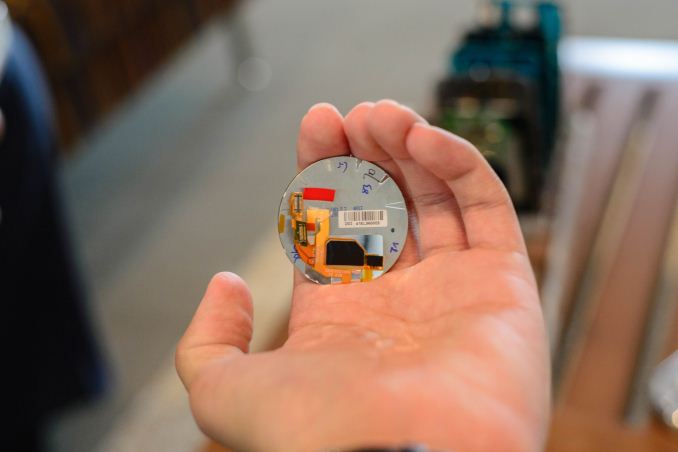
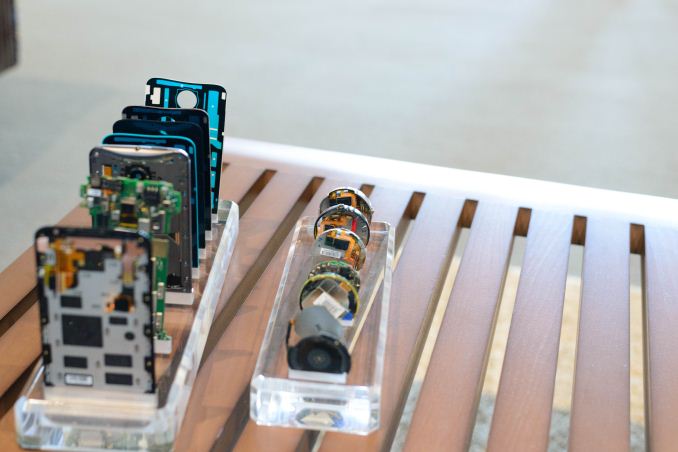
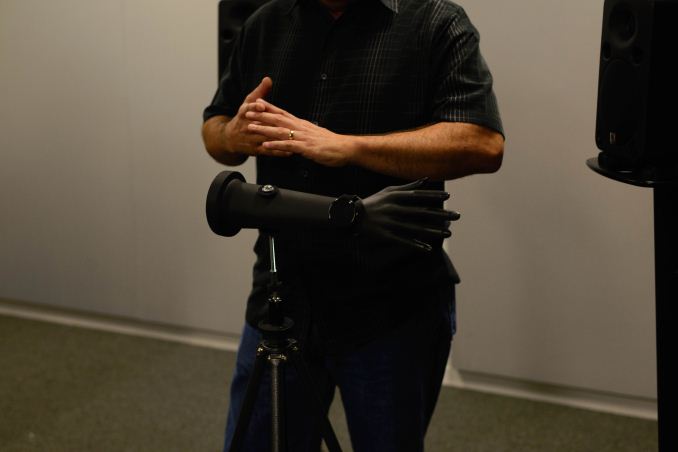
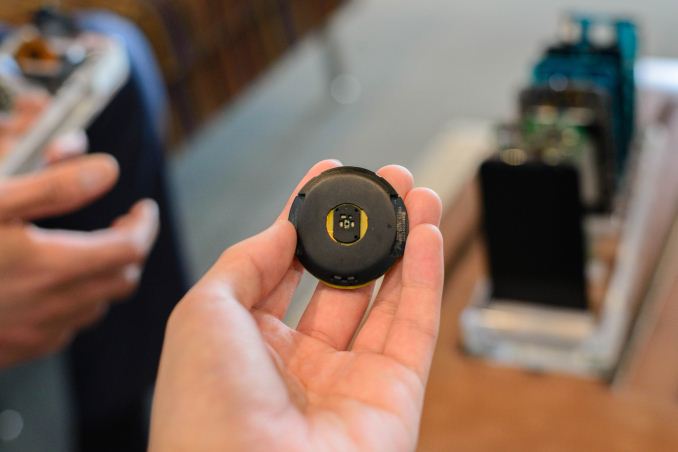
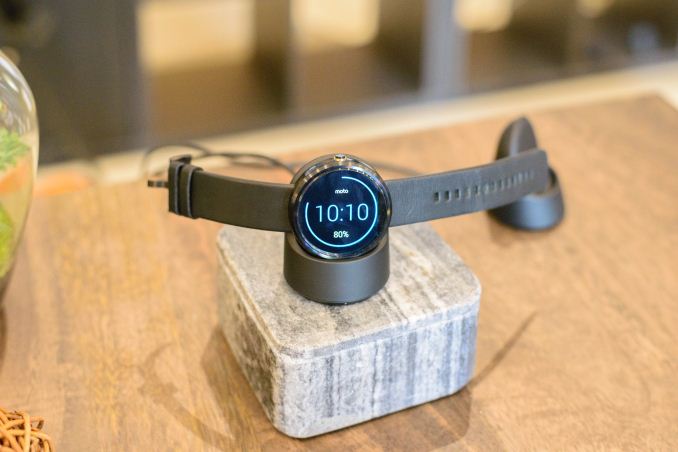








37 Comments
View All Comments
bleh0 - Friday, September 5, 2014 - link
Smartwatches still aren't there yet. The Moto 360 while being highly anticipated is hindered by from what other sites have noted as weak battery life. For me I can wait for a smartwatch that will at minimum have a battery life around two months on a charge. They don't need to replace my phone but they need to last more then a few days.A5 - Friday, September 5, 2014 - link
Yeah, none of these first-gen products quite do it for me.The Moto 360 v2 (or something similar) next year could be really great, though.
nbgambler - Friday, September 5, 2014 - link
IMHO battery life isn't a big concern after about 3 days... I figure I take the watch off at night anyway, but a weekend away without having to lug yet another charger around would be nice. 12 hours though, and I might not even be home from work/dinner/happy hour/gym.Now a wireless charging keyboard wrist rest.... that's an idea!
Impulses - Friday, September 5, 2014 - link
You're gonna be waiting years if a month of battery life is an absolute requirement...bleh0 - Friday, September 5, 2014 - link
I don't mind the wait but something that is going to be on your wrist with the current level of functionality that the smartwatch provides needs much better battery life. A few more improvements on the Mirasol display technology and lower power components along with battery tech advancements could change things sooner.tuxRoller - Saturday, September 6, 2014 - link
Do you plan on wearing your watch to bed? Take it off and charge it along with your phone.Stochastic - Friday, September 5, 2014 - link
Until we get custom SoCs made for smartwatches specifically, I don't think battery life on these devices is going to be great. This is a segment that should improve rapidly, though. Hopefully we'll see the same pace of innovation as we did in smartphones in the late 2000s/early 2010s.Stochastic - Friday, September 5, 2014 - link
Also, for wearables to take off in a big way, they need to be priced closer to the $100-$150 mark IMO.Notmyusualid - Friday, September 5, 2014 - link
Sorry to disagree, but there are people, like myself, that have paid out $10,000s USD on watches.If it is built right, people WILL pay...
shadowjk - Friday, September 5, 2014 - link
I have no clue what these things are supposed to do. Show time, callerid, provide phone controls and media controls?In idle, the omap3 would have a battery life of around 64 hours. Wakeup every second to update time on screen, and we're talking around 24 hours for the omap3.
I dont have specific data on current SoCs, but anecdotally as a user of them, it seems wakeups have become more expensive.
Full cpu use time would sit at hour and half for omap3, and less than half hour for the qualcomm in my phone..